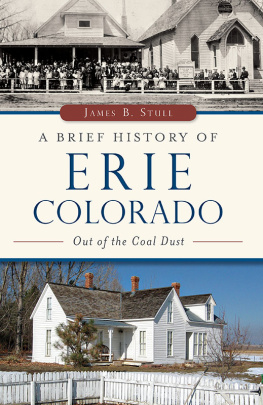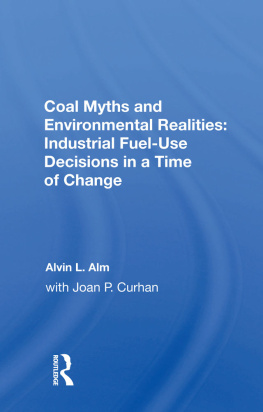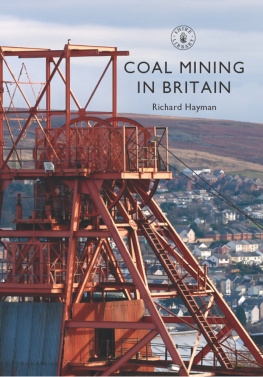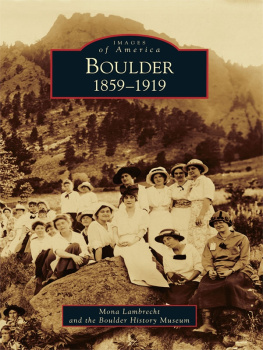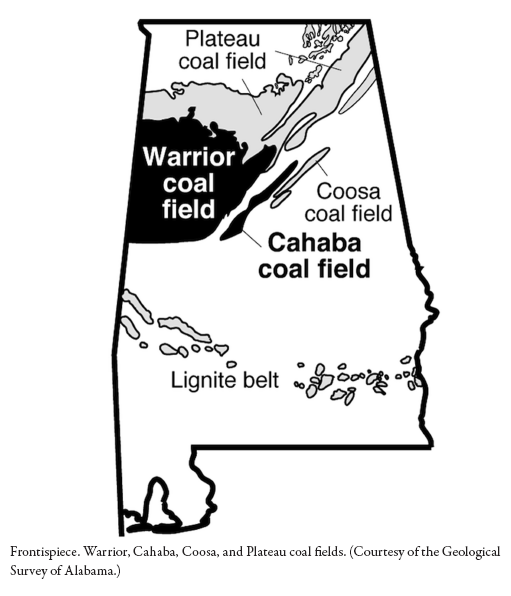ACKNOWLEDGMENTS
This project began as a dream approximately twenty-five years ago. Through historical study, I wanted to re-create the mining town of Piper, to put structures and faces on the rolling hills that I had walked as a child with my dad. Having met numerous Piper People at the annual Piper-Coleanor High School reunions, I longed to preserve their stories and to validate their memories. Earnest research was delayed a decade, but I learned in the interim that the scope needed to be larger than I first imagined. Therefore, this work represents fifteen years of diligent investigation and, I trust, constitutes a fitting testament to the miners and families of all the towns in Alabama's second largest coal fieldthe Cahaba.
Countless staff members at several institutions assisted with my research. First and foremost, the University of Montevallo provided time, resources, and encouragement over the years. My history colleaguesRobert Barone, Wilson Fallin, Clark Hultquist, and Ruth Trusshave supported me since my arrival at UM. Other faculty members in the Department of Behavioral and Social Sciences have expressed interest, and I gained priceless administrative support from the former chair, Susan Vaughn, and from Amanda Fox. UM funded several research and special projects grants, travel expenses, and a semester-long sabbatical in support of my research. Staff members at the university's Carmichael Library worked tirelessly, particularly with interlibrary loan, to acquire necessary (and often obscure) sources. Finally, Tiffany Roskamp-Bunt and Justin Barron contributed their technological expertise in preparing pictures and images.
Other individuals and institutions supported effective research as wellthe Archives, Microfilm, and Special Collections Departments at the Birmingham Public Library; Elizabeth Wells in Special Collections at the Samford University Library; the Ralph Brown Draughon Library at Auburn University; Debbie Pendleton, Steve Murray, John Hardin, and others at the Alabama Department of Archives and History; Bobby Joe Seales at the Shelby County Archives; Alex Sartwell and Lewis Dean at the Geological Survey of Alabama Library. Colleagues on the Alabama Historic Ironworks CommissionJim Bennett, Marty Everse, Tom Land, and Mike Mahangave advice and encouragement at various times. Doctoralcommittee members at Auburn UniversityW. David Lewis, Larry Gerber, Tony Carey, and David Whittenprovided sound feedback in revising the initial draft. Special thanks goes to Wayne Flyntmajor professor, mentor, colleague, and friendwho read numerous drafts, offered sage counsel, and provided timely encouragement throughout the process.
Several organizations afforded opportunities to present and/or publish portions of this manuscript. The Convict-Lease System in Alabama, 18721927 appeared in the Gulf South Historical Review (Spring 2006), and the Alabama Review published Dealing in Black Diamonds: Joseph Squire and Alabama's Early Coal-Mining Operations (January 2011). Two articlesCoal Mining and Mining Laborare included in the Encyclopedia of Alabama. Presentations at the Alabama Historical Association, the Society of Alabama Archivists, the Southern Historical Association, and the Southern Industrialization Project provided venues for discussing my findings with other historians.
Numerous individuals offered their stories, time, and resources to assist with my research. Ken Penhale preserved and organized a trove of letters and documents from Joseph Squire's dilapidated barn and then willingly opened his files for my research; his assistance and friendship are priceless. Henry and Rose Emfinger worked selflessly and tirelessly to create and maintain the Aldrich Coal Mine Museum, and they are always eager to share artifacts, photographs, and information when needed. Charles Adams opened his home and provided newspaper clippings, personal accounts, and stories of Blocton, and Marshall Goggins's photographs added a human touch to the mining process. Elizabeth Miss Lizzie Frost and Dora Grace Smith offered an afternoon of hospitality and information about the Little Gem mines in Dogwood. Judge M. O. Cleveland welcomed me on a visit to William Phineas Browne's homesite, and Jim Lewis shared his family connections to Browne. An interview with Dr. L. C. Parnell Jr. revealed the professional and family history of Adrien Sicard, and Virgil Rice provided a windshield tour of several truck mines on a rainy day. Marlene Hunt Rikard engaged me in conversation, offered initial suggestions, and assisted with her research on the Tennessee Coal, Iron, and Railroad Company. Jack Bergstresser provided expertise in industrial archeology, mineralogy, and topography, and Everett Smith helped in understanding geological formations and the scientific aspects of mining operations. Finally, Douglas Blackmon exchanged information about the convict-lease system, and Michael Williams shared key biographical data dealing with Isaac Taylor Tichenor.
I am indebted to local historians who preserved their community histories and thereby provided a personal touch to the story of coalHenry and Rose Emfinger (Aldrich); Vicky Clemmons and David Daniel (Bibb County); Charles Adams (Blocton); Ken Penhale and Martin Everse (Helena); Marie Butler (Margaret);Eloise Meroney, Clark Hultquist, and Carey Heatherly (Montevallo); James Walker (Piper); Tommie Harrison (Wilton).
As I already mentioned, Piper People remain central to my interest in coal mining. Special appreciation goes to Harold, Betty, Tommy, and Bonnie Campbell; to Thomas M. and Marie Samsal Fancher; to Harry Fullman; to Walter Gardner Jr. for By-Gone Days; to Elizabeth Samsal Kendrick; to Howard and Angela Doll Milling for a map of Boothton and baseball stories; to Cecil Sewell Sr.; to Jess Shepard for meticulous drawings and detailed explanations; to Jim and Nona Terpo; and to James Walker for The Struggle and the Joy.


